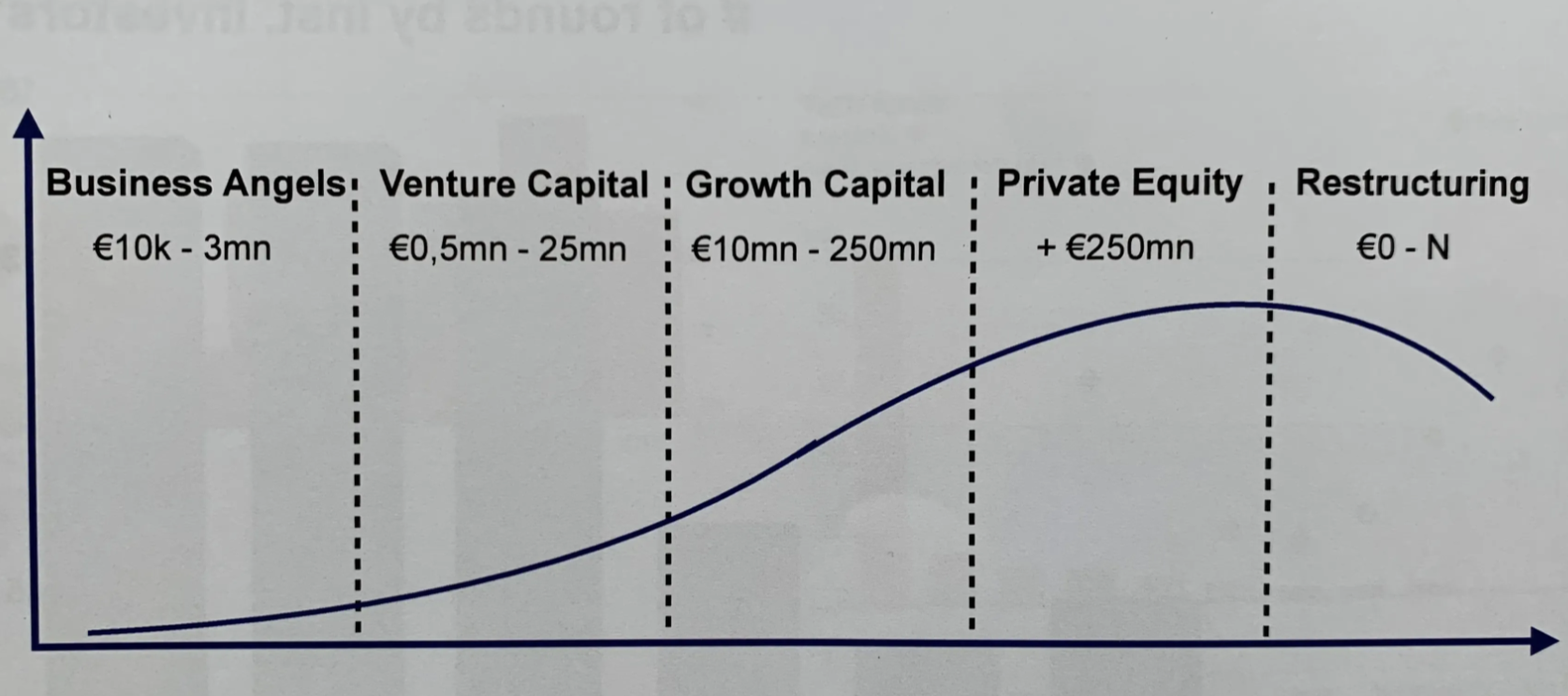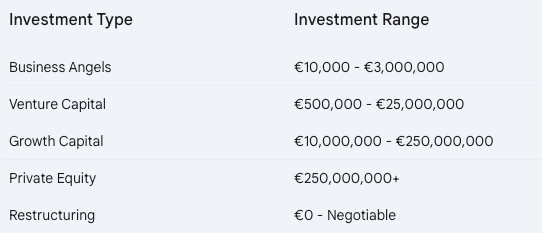
Introduction

When you’re a first-time founder, navigating the world of startup funding can feel like entering a foreign country without a map. You’ve got your brilliant idea, but you need capital to grow. The challenge is that not all investors are the same, and depending on where you are in your journey, you’ll need to engage with different types of investors.
In this post, we’ll break down the key types of investors you’ll encounter at various stages of your startup’s growth, from early-stage backers to those stepping in when your company is worth hundreds of millions (at least on paper 😉….). We’ll keep it conversational and straightforward because the world of investment can be confusing, especially if you’re just starting out.
Now, let’s break down the stages.
Business Angels: Your First Investors
Business angels are often the first real investors to come on board. They’re typically individuals with some money to invest, and they’re looking to support early-stage startups, often with amounts ranging from €10,000 to €3 million. Think of them as mentors who bring both cash and a network of contacts to the table. More often than not, they’ve been entrepreneurs themselves.
At this stage, your company is likely in the idea or very early product phase, meaning it’s high-risk, high-reward territory for the investors. But business angels often take that risk because they’re passionate about entrepreneurship and want to be part of something from the ground up.
✍️ Key Takeaway: Don’t expect a flood of investment offers right away. Early-stage money is tough to come by (especially in this economic climate and upcoming wars), and it often takes time to find the right angel investor who believes in your vision.
Venture Capital: Scaling Up
Once you’ve got a bit of traction—maybe a minimum viable product (MVP) or a handful of early customers—you’ll start to attract the attention of venture capitalists (VCs). VCs typically invest between €0.5 million and €25 million. These investors are looking for startups that can scale rapidly, and they’re likely to push for aggressive growth.
Venture capital often comes in stages, known as seed, Series A, Series B, and so on. The idea here is that VCs invest in your business when they see potential for explosive growth, but they’ll also expect significant returns.
Keep in mind that VCs often want a seat on your board, and they’ll actively guide your company’s strategic direction. You’ll get more money, but it comes with strings attached.
✍️ Key Takeaway: VC funding is a great way to scale quickly, but be ready for the expectations that come with it. These investors will want to see big growth numbers and a clear plan for getting there.
Growth Capital: Going Big
By the time you hit the growth capital stage, your business is no longer a scrappy startup—it’s a scaling machine. Investors are putting in larger amounts of money (ranging from €10 million to €250 million), and they’re doing so because your company is demonstrating real, sustained growth.
Growth capital is typically used to expand into new markets, develop new products, or make key acquisitions. Investors at this stage want to see your business multiplying its revenue year after year.
The stakes are higher here. These investors expect a return, but they’re also willing to take on more significant operational involvement. Your company likely has a well-established leadership team, but the growth capital investors will still influence major decisions.
✍️ Key Takeaway: Growth capital is about taking your business to the next level, but it’s also a stage where investors will want even more control over your strategy and operations
Private Equity: The Big Leagues
Now, we’re talking about serious cash. Private equity (PE) firms come into the picture when your company has matured and is generating significant revenue. They’re investing amounts north of €250 million, and they often buy large stakes in the business—or even the entire company.
PE firms typically focus on established companies that are looking for an exit, significant growth, or restructuring. These investors might have longer-term goals than VCs and will look to optimize profitability or prepare the company for sale or public offering.
Unlike the earlier stages, PE investors will likely demand even more influence, potentially reshaping how the business operates to ensure higher profits. They’ll also be laser-focused on efficiency and scalability.
✍️ Key Takeaway: At the private equity stage, the game can shift from pure growth to profitability and operational efficiency.
Restructuring: Turning Around Troubled Companies
The final stage (€0 - N) in the lifecycle of startup investment often comes when things aren’t going so well. Restructuring involves companies that are struggling or in financial distress. The investment amounts vary wildly, and the focus is on turning the company around, either by cutting costs, renegotiating debts, or sometimes even changing the leadership team.
Investors in this phase are typically specialized turnaround firms or funds. They’re experienced in crisis management and are often brought in to salvage a company that still has potential.
✍️ Key Takeaway: Restructuring is all about saving a company in trouble. It’s a last-ditch effort to right the ship, and it often requires major sacrifices.
The Big Picture: Navigating the Investor Stages
As you move through these stages, the types of investors you attract will change significantly. Each stage comes with its own set of expectations, challenges, and opportunities. From the early support of business angels to the high-stakes world of private equity, understanding where you are in the journey can help you find the right kind of capital at the right time.
It’s important to note that while each type of investor brings something unique to the table, they also expect something in return—whether it’s a seat on your board, influence over your operations, or a hefty financial return.

Final Thoughts
If you’re a first-time founder, navigating these stages can feel overwhelming. But having a clear understanding of where you are and what kind of capital you need can make a world of difference. Each stage has its pros and cons, and knowing when to move from one to the next is key to growing your startup successfully.
And if you’re on the other side, thinking about investing in startups, make sure to read my post “So you want to invest in Startups? Think Twice” where I dive into the realities of startup investing.
Good luck!